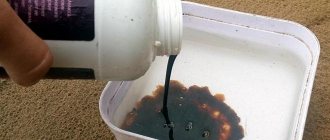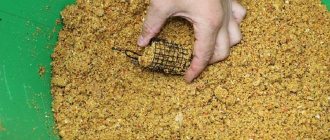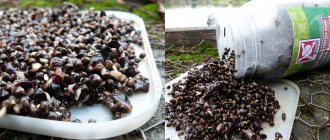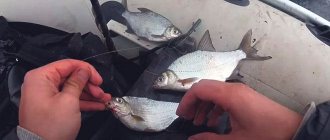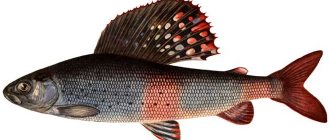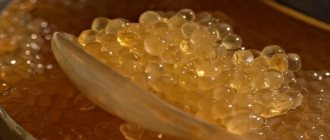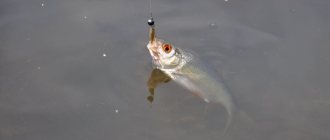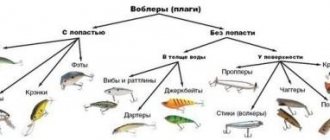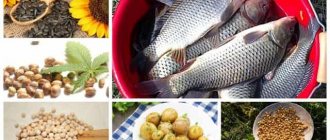Molasses is a syrup-like liquid that is formed during the production of sugar. Translated from French it means black molasses. It has a dark brown color and a noticeable specific odor. It is also called molasses. In some countries, such as Canada and the United States, molasses is used in culinary preparations. It is very popular when used in syrup form. Contains many useful elements and vitamins, which makes it stand out among other sweeteners. Vegetarians love molasses because it is a plant-based source of calcium. In Europe and Russia, black molasses is used in agriculture to feed animals.
Ways to use molasses
Molasses is a carbohydrate feed. It contains more than 60% carbohydrates and only 20–25% water. It also contains a small amount of nitrogen compounds. With its help, all kinds of concentrated and coarser types of feed are flavored. Of course, molasses is used in the production of animal feed. When pelleting animal feed occurs, it is used as a binding agent. Molasses was also used at one time in the production of carbon black (granulated carbon black).
Molasses is valuable for biological technology production. During fermentation, it is divided into two types:
- Aerobic fermentation. With its help, citric, oxalic, gluconic, acetic and fumaric acids are obtained.
- Anaerobic. Butyric, lactic, propionic acids and ethyl alcohol are obtained this way. People have found use for it in the production of high-quality moonshine. And when paired with rice, it makes an excellent Thai whiskey.

Molasses in fishing
In European countries, fishermen have been using molasses in their difficult task for more than thirty years. It is one of the main additives for fishermen. It entered the fishing industry only because of its unique composition of chemical elements. Molasses is a bait that affects the behavior of fish in the water.
Due to its high content of carbohydrates and amides, it is a very important source of energy for all living creatures. Scientists have proven that in the absence of these substances, the processes of energy metabolism and metabolism will not occur in the body. In addition, molasses also contains 10% ash, which is a laxative for fish too. Simply put, molasses is an energy concentrate. After eating complementary foods with molasses, the fish feels an increase in appetite and a surge of strength. Complementary feeding invigorates, while increasing hunger, and ash forces the fish’s body to defecate, preventing it from getting enough. Accordingly, there is no satiety, and the feeling of hunger increases. The more a fish eats, the more it wants to eat. When a whole flock of fish swims in to feed, a crazy rush ensues.
The British were the first to come up with the idea of using molasses as bait. There is an opinion that thanks to this bait, the English fishermen team is leading in the float fishing championships. Their motto is that it is better to forget your fishing rod when going fishing than not to take molasses.
Of course, fishing tackle manufacturers use this bait. They use molasses in complementary foods, producing their products in dry and liquid form. They strive to constantly improve the product to increase consumer demand for it. Amino acids or multivitamins are added to it, flavored, preservatives are included to increase shelf life, and produced in large containers. The meaning of the product itself does not change too much from these additives. Only the price of the bait changes. Also, in combination with additives, molasses can be used as bait for various types of fish.
One of the important qualities of this bait is the ability to dissolve in both cold and hot water. It can be used perfectly in winter when fishing in icy water. Many people use it for bream fishing as the main additive. It is very effective to mix molasses with complementary foods an hour before feeding and leave for an hour. Molasses can be diluted with water or added to food.
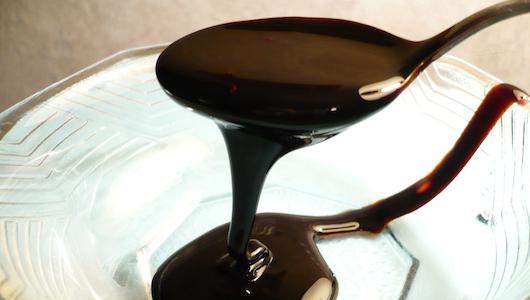
Molasses in bait. Why and in what cases?
Good afternoon dear friends. I would like to dedicate my new article, which, by coincidence, coincided with the onset of spring in Central Russia, to a rather interesting additive to bait, namely molasses. Soon the opening of the feeder season, and indeed the fishing season in general, will come across the country, which means it’s time for us to refresh our knowledge and skills, which require a warm-up after the winter.
Why molasses, you ask? This is because, in my opinion, it is around it that there are the most understatements and misunderstandings in the context of use. Once upon a time, when a salesman in a fishing store sold it to me for the first time, I didn’t even know what it was. Then at the pond, I didn’t understand how to use “this”, thick and almost black. But time passed, experience appeared, knowledge gained on the Internet, and most importantly, practical observations were gained on the use and effect of molasses in groundbait. Now I'm ready to share them with you.
A bit of quoting definitions. Molasses is a liquid obtained during the beet sugar production process. In fact, it is a by-product, but it is actively used in the production of yeast for baking bread, in the production of food acids, and as a feed additive for livestock. Opaque, the color can be either brown or dark brown, sweet, with a slightly bitter aftertaste, completely soluble in water. In addition, molasses is heavier than water, which is one of its main mechanical properties in bait. In general, molasses is used in bait mixtures due to its three important properties:
— Change in the mechanics of the bait mixture, which is mixed with molasses, relative to another;
— A pronounced laxative effect that molasses has on the digestion of fish, preventing it from becoming full;
— The presence of betaine in molasses, which is a digestive stimulant in fish.
Molasses is most often used for targeted fishing for carp and bream. However, from experience I will say that roach also perceives it well. Molasses is used both when mixing bait mixture and for soaking bait pellets, which will be part of the feed program or stuffing for method feeders. In addition, molasses can serve as an excellent dip for baits. I, as a bream fisherman, will tell you about my experience in using this ingredient on bream fishing.
There are two ways to mix molasses bait. In the first method, the bait mixture is mixed with clean, thick molasses without adding water. This method, of course, is labor-intensive, and in such cases it is much more convenient to use a screwdriver with a special whisk. In this case, molasses makes the bait very sticky in your hands and tastes sweet. In addition, molasses slightly darkens the mixture. In water, this bait disintegrates very quickly, forming a cloud of molasses around, which is either carried by the current or settles at the fishing point (if the reservoir has a weak current or no current). The effect is very interesting, because such baiting mechanics are difficult to imagine on the shore, holding a sticky and sweet mixture in your hands.
The second way is to mix the bait with a mixture of molasses and water. In fact, the effect remains the same, only it decreases exactly as much as the molasses is diluted with water. But mixing this bait with your hands is much more convenient.
The most important thing is that molasses greatly changes the mechanics of the bait. The mixture becomes very crumbly and dusty in water, which is difficult to achieve without adding this ingredient. You can try it on the shore by throwing a ball of such bait into the water and see how it disintegrates at the bottom and works.
In addition, we must not forget about the wonderful effect of stimulating digestion and, conversely, the laxative effect of molasses on fish. This can be of great help where there is a high risk of overfeeding the fish. This works especially well in the summer, when there is a lot of large fraction in the bait, which can itself saturate the fish very quickly. Molasses is an indispensable assistant in such cases. For those feeder lovers who practice it in winter in open water on non-freezing reservoirs, you can also try using molasses in order to reduce the risk of overfeeding inactive winter fish. However, I noticed that the stronger the frost, the greater the chances that bait, which contains quite a lot of molasses, begins to gain positive buoyancy, which is very bad. Therefore, I concluded that it is worth using it if the temperature does not drop below 6-7 degrees. This is my personal experience, it may not always be the case.
If you also refer to my experience, I almost always mix bait with molasses, which I dilute with water. For 2 kg of bait I use 200 grams of molasses. I use molasses from , because it has a convenient packaging, ideal jar size and variations in flavors. And most importantly, I am confident in the stable quality of this product.
By the way, speaking of flavors, there are now many options for flavored molasses on the market, which is undoubtedly a plus. You all know that fish are very guided by the smell that the bait gives on the bottom. Therefore, you can and should experiment with scents every fishing trip, choosing the right one. Or you can simply use standard molasses, which also has its own smell that cannot be confused with any other. And believe me, this stand-alone scent also works great when fishing.
In conclusion, I would like to say that molasses is one of the very interesting and necessary components that should be used in feeder and float fishing. After all, fishing without experiments is not fishing. And perhaps it is the molasses added to the bait that will attract the desired trophy to your spot!
Best regards, Vladimir Kosenkov
Effective DIY fish bait
You can make your own molasses bait in the form of a liquid filling to create scent bombs. In this case, a small piece of foam rubber is placed in the feeder itself, and it is periodically moistened with molasses. It flows down from above, and the sides of the feeder should be covered with bait. When sweet syrup enters the feeder, the food is pushed up. From the outside it looks like an explosion. The larger the piece of foam rubber, the larger the area of influence of the tasty cloud. Bream and roach really like these special effects.
Of course, the price of molasses is not the lowest. You can try this fish bait, which is also added to horse feed. Its price is much cheaper than in the fishing industry, but it is difficult to say whether this will have an effect. It costs 500–600 rubles per liter. It can be used in the manufacture of self-igniting boilies.
At a rather high price, molasses for fishing with your own hands is a way out. Many amateur fishermen are looking for an alternative to molasses bait. Some fishermen replaced it with effervescent vitamins or aspirin tablets. Vitamins are inexpensive and come in different colors and scents. The essence of their use is the same as molasses. They are added to the food, half a tablet at a time. The feeder is lowered into the water, and the vitamins in the water begin to hiss, splash the food to the sides and emit a smell. The advantage of this method is its ease of use.

How to make molasses
Having a sweet syrup like honey is very important in cooking. And if you were unable to purchase molasses, you can easily make it yourself. Why is she so popular? Not only does the additive radically change the taste, it also adds softness to sweets, prolonging freshness. After reading the recipe below, the question of how to prepare molasses at home will disappear by itself.
Ingredients for making white sugar substitute:
- water – 150 ml;
- sugar – 350 g;
- citric acid – 2 g;
- baking soda – 1.5 g.
Everything must be done strictly in accordance with the recipe:
- You need to take a small saucepan and pour cold water. Put on fire and wait until it boils.
- Then, stirring constantly, add sugar. Let it boil again.
- Add the required amount of citric acid, reduce heat and cook covered for about 45 minutes.
- The syrup is almost ready, you just need to let it cool a little.
- Next, dilute baking soda in water and add to the syrup, mixing well.
- If the mixture begins to foam, then you did everything right.
- After 15 minutes, the foam should subside.
- If the foam has not disappeared, you can remove it with a spoon. Molasses is stored in a cellar or refrigerator, in glass containers.
What can replace molasses?
The secret to success for an excellent catch is molasses. How to replace this bait if you can’t buy a ready-made one? Alternatives include beet molasses and maple syrup with added spices such as coriander or cinnamon. This bait should be stored in the refrigerator to avoid mold. Once the molasses is removed from the refrigerator, it needs to come to room temperature so that it is not too thick. There may be a need to pour molasses over time. To do this, the container into which it will fall should first be lubricated with vegetable oil. This simple procedure will later help the molasses to flow out of the container easily and freely. Molasses or molasses can be stored in the refrigerator or open container for no more than a year.
In addition to beet molasses, cane molasses is also popular with experienced anglers. Cane sugar has two components: sucrose crystals and a kind of molasses film that covers them. Molasses is a waste product. The composition of molasses, which is obtained in the production of raw refined sugar, includes from 25 to 40% sucrose. Molasses also contains reducing sugar in an amount of 12–30% and nitrogen compounds up to 0.5%. The amount of nitrogen compounds in cane molasses is less than in beet molasses. Cane molasses necessarily contains elements of ash and aconitic acid. But, compared to beetroot, cane molasses contains more vitamins.
Cane molasses is mainly used in the production of alcohol, rum and various solvents, all kinds of acids and glycerin. It is also used to add to animal feed. Less often it is used in fishing. Until recently, this molasses (bait) was a rare raw material in Russian production. Finding her may still take some time.
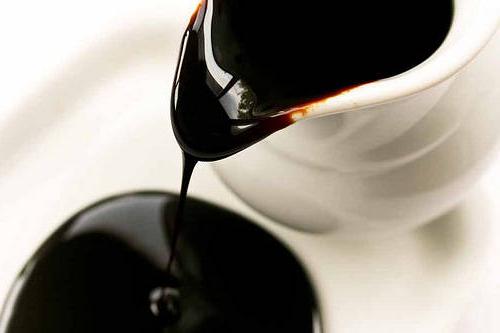
Cooking process
- The beets are grated, then placed in a container and water is added. Add half the amount of grated beets with water. The resulting mixture should be squeezed a little with your hands so that the beets release juice. When the water turns reddish in color, strain the juice through a sieve. Mash the remaining mixture a little, add water, and pass through the sieve again. The same thing can be done using a juicer if you have one.
- Place the resulting juice on the stove. To obtain sweeter molasses, add 5-7 tablespoons of sugar. When adding sugar, do not cook until thick. After the boil begins, you need to reduce the heat, making it very small. During cooking, all the water will gradually boil away, and the juice will turn into molasses. The juice will acquire thickness, color and smell. When adding sugar, it is important not to let the mixture thicken too much; in appearance it should look like liquid syrup. It should not go into the thread, otherwise the molasses will become sugary.
- The finished molasses must be cooled and poured into a jar. Store it in the refrigerator.

What kind of molasses is there?
Molasses - what is this additive? The by-product of sugar processing varies both in color and in the raw materials used in its production. There are two types of molasses known throughout the world: light and black. The first is made from starch, the second from beets and sugar. Types of starch for making light molasses:
- potato;
- corn;
- wheat;
- rye;
- barley;
- sorghum;
- tapioca.
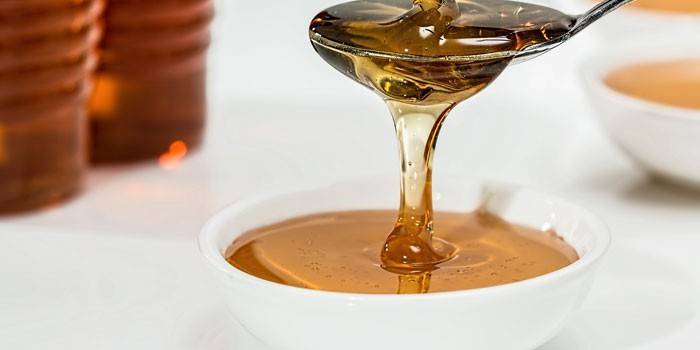
Starch syrup
Previously, employees of the Russian food industry produced the only type of starch syrup - caramel. Starch syrup is a type of light molasses. Today, starch syrup is divided into 4 types and they depend on the percentage of carbohydrates in it:
- glucose;
- maltose;
- highly sugared;
- low sugar.
Maltose molasses
If you saccharify raw materials containing starch (corn flour or barley malt) with enzymes, you get maltose syrup. It is used both in the production of bread and confectionery, as well as in the production of soft drinks and softening alcoholic drinks. Maltose molasses is valued for its characteristics: bright chocolate color, sweetness and slightly malty aroma.
Molasses
Molasses is a product of processing cane or beet sugar. Molasses gets its name from the Portuguese word “melaco” (honey). In terms of its properties, molasses is more like a food additive. It is like sugar, but with the largest amount of microelements. Homemade blackstrap molasses is used to make gingerbread cookies.
Caramel molasses
Sweet caramel molasses consists of glucose, maltose, maltotriose and other substances. Scope of application: food industry for regulating sugar crystallization processes. Often added to childhood candies and caramels - toffee.
Characteristics of caramel molasses:
- viscosity;
- harmonious combination with milk protein - you get excellent taste and color;
- adding to treats with a high content of dry ingredients prolongs their taste for a long time;
- regulates the crystallization of lactose in milk.
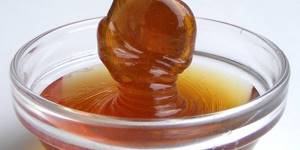
Corn syrup
Corn sweetener (100 grams) contains 316 kcal. Corn starch molasses is popularly added to jelly candies, marmalade, and fillings because of its ability to caramelize. Corn starch is inexpensive, which reduces the cost of preparing confectionery products.
Characteristics of corn syrup:
- lowers the freezing point of the product;
- makes the shelf life longer.
Beet molasses
A waste product from sugar production, black molasses, was produced using technology invented back in the 6th century in France. The scientist's name was Olivier de Serra. Recommendations for the proper use of sugar beets were found only in 1747. But the use of beet molasses began to gain momentum only in 1800. The sugar product is excellent for coloring sugar cubes and is used in cooking and alcohol production (Hong Thong whiskey).
Ingredients for making half a jar of beet molasses:
- beets – 1 pc.;
- water – ½ tbsp;
- sugar – 6-7 tbsp. l.
Cooking steps:
- Extract juice from beets using a juicer.
- Place the saucepan with the juice on the stove and add sugar.
- Cook over low heat until desired thickening.
If you look at the photo of beet molasses, then after cooking it should:
- look like liquid syrup;
- have a dark brown tint;
- taste like burnt sugar.
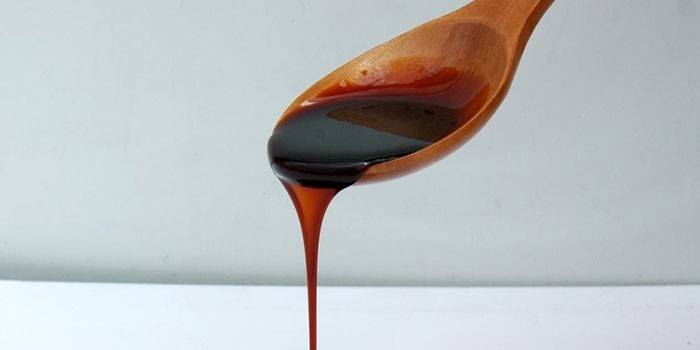
White molasses
This sweetener acquired its name thanks to refined sugar, which serves as a raw material in its production. There are subtypes of white molasses that are made from corn, potato and other starches. White is one of the two most famous types of sugary product. White molasses is best used for making all kinds of syrups.
Ingredients for white (refined) sweetener:
- refined sugar – 350 g;
- water – 150 ml;
- citric acid – 2 g;
- baking soda – 1.5 g.
Cooking process:
- Bring a pan of water to a boil and add refined sugar, let it dissolve.
- When it boils again, add acid and cover with a lid.
- Leave to simmer for 45 minutes and turn off.
- When the mixture has cooled, add diluted soda.
- Ready for use in a quarter of an hour, when the foam subsides.
- How to determine location by phone number
- Pickled cucumbers with citric acid
- How to change the tariff on MTS
Cane molasses
This molasses is formed during the production of cane sugar as a by-product. Whether its color will be dark brown or a little lighter depends on the quality of the raw material - reed. Mainly because of its properties, cane molasses is used in moonshine factories, and in cooking - in the preparation of fruit syrups (melon, watermelon, grape, etc.)
How cane molasses is made:
- Peeled sugar cane is crushed and the juice is squeezed out, which is then sent for crystallization.
- The result is sugar crystals and a liquid residue - light molasses. It also contains a huge amount of sugar.
- Next, water is added and processed again.
- Another crystallization occurs and the secondary residue becomes dark in color.
Characteristics of cane molasses:
- viscous;
- syrupy liquid;
- peculiar smell;
- bittersweet taste;
- rich in fructose and glucose.
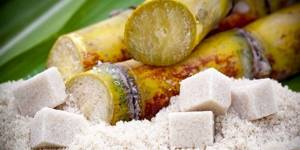
Cooking method
Pass the juiciest and ripest bunches of grapes through a juicer or mash to obtain juice. Strain the juice through a sieve or cheesecloth, pour into a container and simmer over low heat until it turns into a thick syrup. Don't forget to stir the juice. After 7–10 minutes, the molasses is ready.
Recipes for making molasses bait for fishing with your own hands are not complicated. But fishing with such bait brings amateur fishermen a lot of positive emotions, adrenaline and joy.
